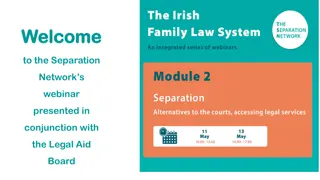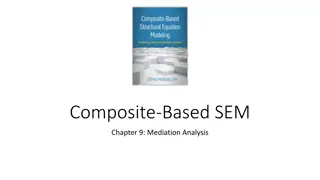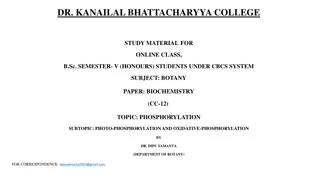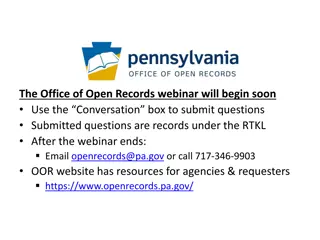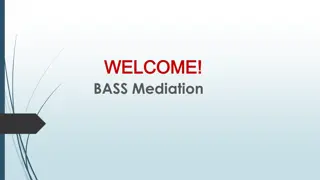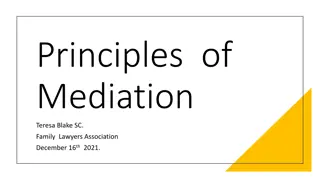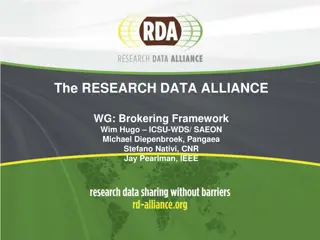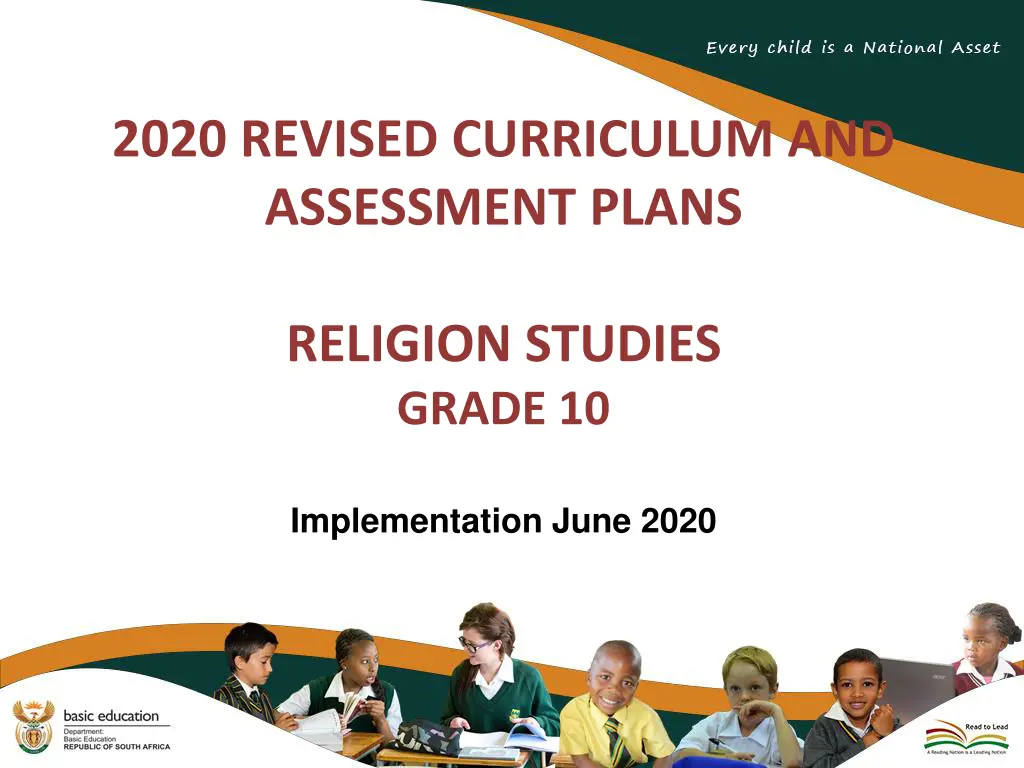
Revised Curriculum and Assessment Plans for Grade 10 Religion Studies
"Explore the amendments and implementation plans for the 2020 revised curriculum and assessment in Grade 10 Religion Studies. Covering amendments to content overview, teaching plans, and assessments for effective teaching and learning."
Download Presentation

Please find below an Image/Link to download the presentation.
The content on the website is provided AS IS for your information and personal use only. It may not be sold, licensed, or shared on other websites without obtaining consent from the author. If you encounter any issues during the download, it is possible that the publisher has removed the file from their server.
You are allowed to download the files provided on this website for personal or commercial use, subject to the condition that they are used lawfully. All files are the property of their respective owners.
The content on the website is provided AS IS for your information and personal use only. It may not be sold, licensed, or shared on other websites without obtaining consent from the author.
E N D
Presentation Transcript
2020 REVISED CURRICULUM AND ASSESSMENT PLANS RELIGION STUDIES GRADE 10 Implementation June 2020
Presentation Outline 1.Purpose 2.Amendments to the Content Overview for the Phase; 3.Amendments to the Annual Teaching Plan; 4.Amendments School Based Assessment (SBA) 5.Conclusion
1. Purpose To mediate the amendments of the trimmed and re-organised 2020 Annual Teaching Plan including School Based Religion Studies, Grade 10 for implementation in June 2020 as stipulated in Circular S2 of 2020. To ensure that meaningful proceeds during the remaining teaching time as per the revised school calendar. To assist teachers with guided pacing and sequencing of curriculum assessment. Assessment for teaching content and
1. Purpose (continued) To enable teachers to cover the essential core content /skills in each grade within the available time. To assist teachers with planning for the different forms of assessment. To ensure learners are adequately prepared for the subsequent year/s in terms of content, skills, knowledge, attitudes and values
2. Amendments to the Content Overview for the Phase Grade 10 RS
SUMMARY: AMENDMENTS TO THE CONTENT OVERVIEW FOR THE PHASE RS GRADE 10 TOPIC GRADE 10 GRADE 11 GRADE 12 1. Variety of religions Various clusters of religions The beginnings of the religions of the world The nature of the religions in South Africa Statistical spread of religions Interaction of religions (Reduced ) Main developments of religions The mutual interdependence of religion (Clustered topics) and social factors Influence and adaptation between religions Important concepts Approaches aimed at interreligious dialogue Conceptual distinctions Internal differentiations within religions Main features of such differentiations Unique features of various religions History and present dynamics of inter-religious relationships 2. Common features of religion as a generic and unique phenomen on Definitions of religion Aspects of understanding religion Major dimensions common to all religions Origins of religions Roles of social forms, institutions and roles in religion Social forms that have been produced in various religions Leadership roles produced in various religions Reduced number examples Symbols Theories about religion The nature and role of narrative and myth in religion Types of rituals and their role in religions Concepts: faith, meditation, mysticism, and the artistic religion Reduced number of concepts Religious teachings The central teachings in one religion Normative sources religions Interpreting one normative source Analysis of secular worldviews The origin, purpose and influencing factors behind worldviews in various worship, prayer, spirituality at least two expression of
SUMMARY: RS AMENDMENTS TO THE CONTENT OVERVIEW FOR THE PHASE Topic GRADE 10 GRADE 11 GRADE 12 3. Topical issues in South Africa Topical issues in Africa and the world Removed the world Principles of ethical decision-making pertaining to public life Religions and economics Critical analysis of the relationship between religions and economics Religion and the state How religious beliefs influence the development of state policies and practices Removed some of the beliefs Religion and politics Religions and the natural environment Co-responsibility and cooperation of religions Developing a strategy to solve a major social problem Role of media in influencing public opinion on religion Religious freedom, human rights and responsibilities Topical issues in society 4. Important research Studies Rituals Inter-religious relationships principles in of Interviews on gender issues. Reduced number issues Relaxation and leisure from an ethical point of view Research and religions into Religion across Religion in areas of conflict in South Africa, Africa and the world Religion and sciences the natural
3. Amendments to the Annual Teaching Plan
Summary: Content/Topics Amended Content/Topics Term 2 Amendment Removed because Grade 11 does address these concepts, therefore it will be repetition. Removed Interaction of Religions dialogue, conflict, fundamentalism, pluralism, Inter-religious relationships: an investigative process to develop interviewing skills Reorganised Removed the conducting of interviews because of Covid 19 and reduced tasks to research - Establish how interviews should be conducted Removed Removed: Definitions of religion: compare various definitions of religion It s covered in Term One Definitions of religion: - Compare various definitions of religion
Summary: Content/Topics Amended Content/Topics Term 3 Amendment Reduced Reduced the number dimensions. Major dimensions common to all religions: The numerous dimensions are an extension of one idea. cosmos, humanity, ethics, rituals, symbol, spiritual Hence it can be removed without sacrificing content to be taught Removed monarchies and oligarchies have similar themes. Removed Social forms and/or institutions that has been produced in various religions: Monarchies Repetition There are 16 leadership roles. Many overlap in terms of their role within the religious community. Example a guru and a pundit are closely related Leadership roles produced in various religions: Elder, nun, guru, imam, monk, pastor, teacher
Summary: Content/Topics Amended Content/Topics Term 4 Amendment NO TOPICS REMOVED , REDUCED OR REORGANISED TERM 4 IS MAINLY CONSOLIDATION
4. Amendments School Based Assessment (SBA)
Summary: Revised Programme of Assessment Term 2 Term 3 Term 4 Variety of Religions Interaction of religions: Common features of religion as a generic and unique phenomenon Aspects of understanding religion: - Understanding religions from the point of view of the adherents, Learners self-discovery as an ongoing process without external expectation to conform, Correlations and patterns Topical issues in society Principles of ethical decision-making pertaining to public life: - how people in different religions come to decisions regarding social ethics - The sources of ethical decision-making - Tolerance, respect, propaganda, Dialogue , indoctrination and Syncretis Major dimensions common to all religions: - Divinity, cosmos, humanity, knowledge, good and the beautiful, sacred and normative tradition, narrative and myth, ethics, rituals, symbol, spiritual experience or spirituality, faith, organisation Common features of religion as a generic and unique phenomenon Definitions of religion: - Compare various definitions of religion - Religion as it is generally defined - Definition of religion in a religious context The principles of harmonious social existence expounded by various religions
Summary: Revised Programme of Assessment Term 2 Term 3 Term 4 Common features of religion as a generic and unique phenomenon The learner s understanding of religion Roles of social forms, institutions And roles in religion. Social forms and/or institutions that have been produced in various religions: - Monarchies - Oligarchies - Democracies - Division of power between central Organisations and local organisations. Religions and economics from a Religion Studies perspective - Religious views on the relationship - Ethical principles in religions pertaining to Economics - Influence of religions on economic life - Influence of economics on religions - The relationship of the term religion with other concepts such as worldview and belief systems: reflection and impact of concepts on religious interaction Research into and across religions Inter-religious relationship : an investigative process to develop interviewing skills - Develop questions, Establish how interviews should be conducted, Identify the people to be interview - Present report, Discuss in class. Leadership roles produced in various religions: - Elder, healer, minister, nun, guru, imam, monk, pastor, priest, prophet, scholar, priestess, pundit, teacher, rabbi and roles Based on birthright
4. Amendments School Based Assessment (SBA)
PROGRAMME OF ASSESSMENT GRADE 10 AND 11 MARKS YEAR % Term Assessment task Recording Reporting 1 Written task 100 100 2 NO ASSESSMENTS Project or Task 300/3 100 100% 3 100 Test School-based 100 100 25% Assessment (SBA) End-of-year 300 75% 4 examination 100% Total for end of year 400
STRUCTURE TEST GRADE 10 Test: One 1 hour 30 minutes paper: 100 marks Religion studies test will consist of three questions SECTION A: Compulsory (30 marks) SECTION B: Learners will answer a short-source based questions (30 marks) and extended writing (40 marks)
CONCLUSION AMMENDEMENT FOR COVID 19 1.Amendments to the Content Overview for the Phase 2.Amendments to the Annual Teaching Plan; 3.Amendments School Based Assessment (SBA)
Contact Details Name: CES: Religion Studies Dr K Perumal Department of Basic Education Tel: 012 357 4257 /0843012514 Email: Perumal.K@dbe.gov.za




